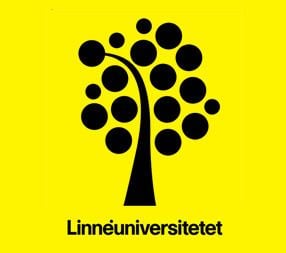Endowment SEK 1.5 billion Students ca 15,000 FTE Total enrollment 35,000 (2011) Rector Stephen Hwang | Established 2010 (1977) Academic staff 2,000 Undergraduate tuition and fees 125,000 SEK (2011) Phone +46 77 228 80 00 | |
 | ||
Address P G Vejdes väg, 351 95 Växjö, Sweden Similar Lund University, Umeå University, Linköping University, Uppsala University, University of Gothenburg Profiles | ||
Linnaeus University (LNU) (Swedish: Linnéuniversitetet) is a state university in the Småland region of Sweden. It has two campuses, one in Växjö and one in Kalmar. Linnaeus University was established in 2010 by a merger of former Växjö University and Kalmar University (Högskolan i Kalmar), and has been named in honour of botanist Carl Linnaeus.
Contents
History
Växjö University began as a local department of Lund University in 1967. The department became an independent university college in 1970, and was granted full university status in 1999.
Kalmar University was similarly a university college, founded in 1977. Though not a university by the Swedish definition, it had been entitled to issue doctoral degrees in the natural sciences since 1999.
Logo
The university's logo is a stylized tree. The origin is a Linnaeus drawing taken from his 1725 publication Örtabok. While the tree is said to be a symbol for the month of May and to represent the power of growth, it also symbolize the university's ambition to be a global university with the region as its base and the world as its arena.
Faculties
Schools
Other institutes
Other departments
Campus
There are two campuses, one in Växjö and one in Kalmar.
Kalmar
Kalmar is a medium-sized town, with ideal settings for student life. The town is attractive and conveniently laid out, with a colorful history and a castle dating back to medieval times, close proximity to the sea, undulating farmlands and deep forests. The School of Natural Sciences in Kalmar has special competence in the area of life, health and the environment and is recognized for excellence in teaching and research across a range of natural sciences and related disciplines. The School offers Master’s programmes which equip the graduate for work in industry or future studies towards a PhD. However, the student life in Kalmar has recent been partly worked against by the local authorities. For example, the only night club for students in Kalmar, Core House, was closed due to a rent chock from the owner, Kalmar Kommun.
Växjö
Växjö, is a central community in southeastern Sweden, with a full range of cultural and musical life in its many museums, theaters, cathedrals and concert halls. The House of Emigrants commemorates the great emigration epoch from 1850 to 1930, when 1.3 million Swedes emigrated to America. The region is also known for its high tech industry, pulp and paper manufacturing, and home of the furniture manufacturer, IKEA. The surrounding pristine lakes and forests are an attraction for those who love wildlife and the outdoors. Växjö is also one of the leading tennis cities in the world as Mats Wilander, Stefan Edberg, Magnus Larsson and Jonas Bjorkman have all trained and played here. Växjö is easily accessible from Copenhagen and Stockholm by plane and train.
The campus is located just outside Växjö city center. It was modelled after the American Campus style, meaning that all teaching premises are within walking distance. The campus was built with the environment in mind, as it is bordering a nature conservation area.
There are 3,700 student apartments and dorm rooms on the university campus housing approximately 4,600-5,200 students. A part of the university campus is dedicated to the Videum Science Park. The park gives space to over 100 companies, thus being in close proximity with the university and encouraging innovation and research. The university also has student housing on Seminarievägen located in Växjö city center.
Teaching premises and accommodation stand side by side on the campus. There are also restaurants, cafés, bars, bookshops, a sports centre and a variety of service facilities. The campus offers a safe, relaxed environment despite the high level of activity. It is bordered by meadows, a nature conservation area, a lake with bird-watching towers and a castle.
New buildings have been erected with due concern for the environment, leaving room for old trees and moss-covered boulders among the new architecture on campus. Cars have only limited access to the site, but cycle paths lead directly to the town centre and out into the beautiful countryside all around.
VIS
VIS stands for Växjö International Students. It is a non-profit organisation, and a local section of ESN Sweden.
The board and its community consist of students that use their own spare time to create activities for all exchange students, and to give them a positive experience of Växjö.
School of Natural Sciences
The School of Natural Sciences is part of the Faculty of Science and Engineering. Scientists working at the school are involved in research and teaching activities in Biology, Biomedical Science, Pharmacy, Chemistry, Food Science, Environmental Science, Optometry and Science Education. Most of the research laboratories and classes are operated in Kalmar. It offers seven Bachelor programs (in Swedish) and four Master programs.
A non-comprehensive list of the research group operating with the school include:
